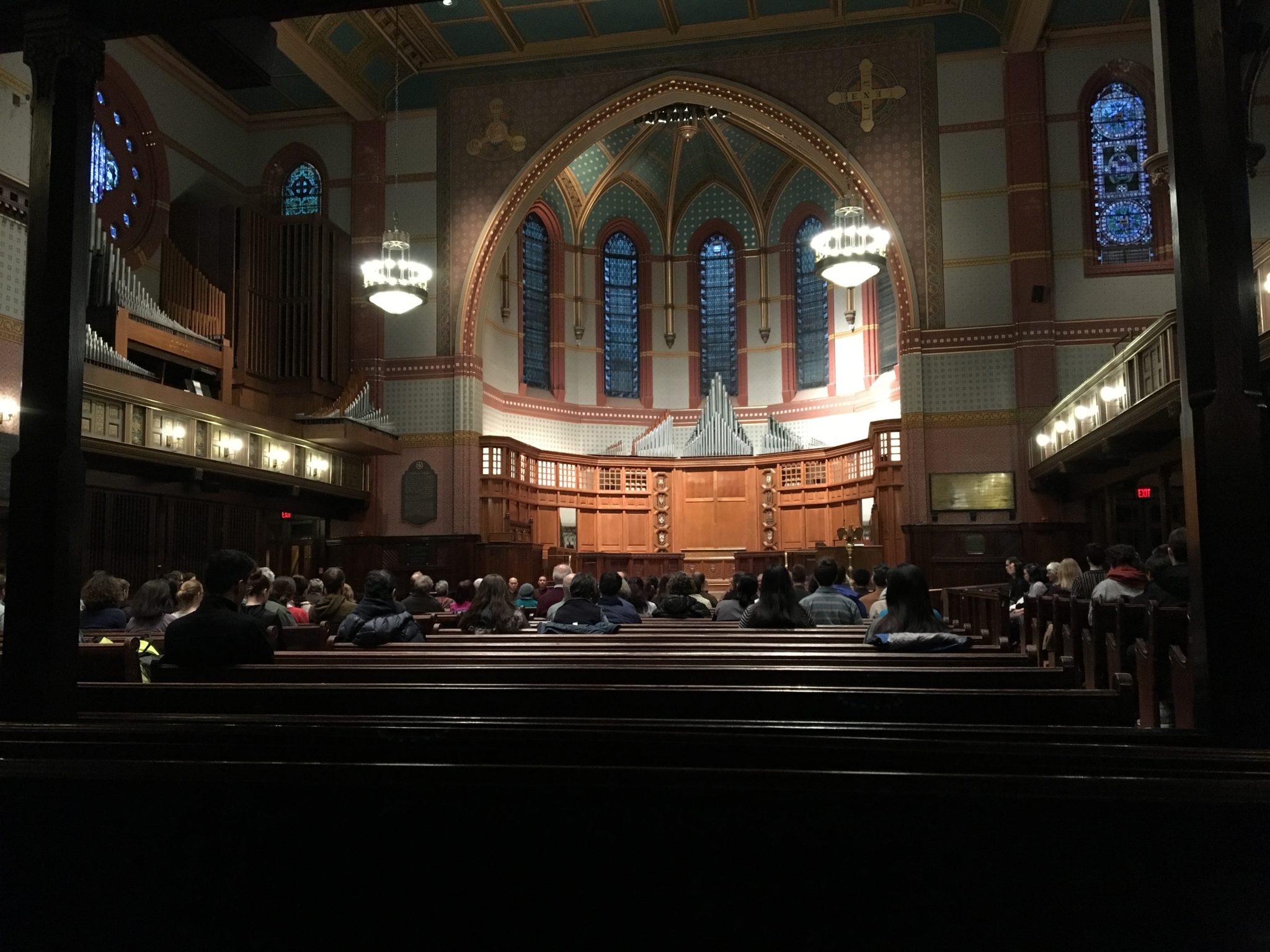
Helena Lyng-Olsen
On a sunny Tuesday morning, over 60 people of all ages followed monks and nuns on a silent, thoughtful mindfulness walk around Cross Campus and Old Campus.
These monastics visited Yale from Plum Village’s Blue Cliff Monastery in New York’s Catskill Mountains. Their trip was sponsored by the Yale Buddhist Sangha, a community for students interested in Buddhism at Yale, along with 14 other Yale and New Haven organizations, including the New Haven Zen Center and the Good Life Center at Yale. Before beginning the walk, Sister Hội Nghiêm from Plum Village monastics told the attendees that “coming back to oneself” through walking meditation can help with one’s body, motion and breathing.
After the hourlong outdoor walking meditation, the 15 visiting monastics led a public talk in the evening about the “Mindful Way of Self-Care” at Battell Chapel.
“Today is a beautiful and enlightening day, bringing together all dharma communities to celebrate life and mindfulness,” said Alex Garbera of the Shambhala Meditation Center of New Haven after the mindfulness walk.
In the evening, the monastics led the more than 80-person audience of the lecture in communal songs and silent meditations before sharing their philosophy and advice regarding self-care. They compared the mind and body to a garden, with seeds that must be cultivated through self-care in order to grow into flowers. They reflected on how they relieve stress at the monastery and gave the audience advice on how how to be in touch with the present moment and the “freshness and clarity that lies within every person,” as Brother Pháp Khoi described.
Before the evening lecture, the monastics ate lunch with students at the Yale Divinity School, visited the Buddhist shrine in Harkness Tower and attended a dinner with the Vietnamese Student Association. The monastics noted that Yale students and faculty they had spoken to at lunch and dinner had asked them to speak on how to relieve stress.
“Help each other to remind one another when someone is working too much or too hard,” Brother Pháp Khoi explained. “At the monastery we practice walking meditation, eating meditation, working meditation. We remind ourselves to enjoy the present moment together. If we’re not careful, work is never done. We learn how to let go, instead of thinking, ‘I must get this work done now.’”
Attendees of the walk and the lecture included Yale students as well as local residents of all ages, including members of various dharmic groups in New Haven including East Rock Sangha and New Haven/Yale People of Color Meditation.
According to the Plum Village monastics website, over 700 monastics around the world are affiliated with Plum Village Sangha, which is a primarily Vietnamese Buddhist community. To become a Plum Village monastic, a potential applicant must be under 50 years age, speak either Vietnamese, English or French, spend at last three months at the Plum Village Monastery and undergo a three-year training period before being ordained.
One attendee said the walk provided him with a sense of calmness.
“It’s good to move the attention to the feet and quiet the mind,” said Eric Triffin, a New Haven resident who took the mindfulness walk with his Papillon dog named Moxie. “The more we can find ourselves elementally, walking the same paths as people before us, the more we can unite, find purpose and not feel alone.”
The monastics of Plum Village are part of the lineage of Thích Nhất Hạnh, the founder of the Unified Buddhist Church who Rev. Martin Luther King Jr. nominated for the Nobel Peace Prize in 1967.
Helena Lyng-Olsen | helena.lyng-olsen@yale.edu







